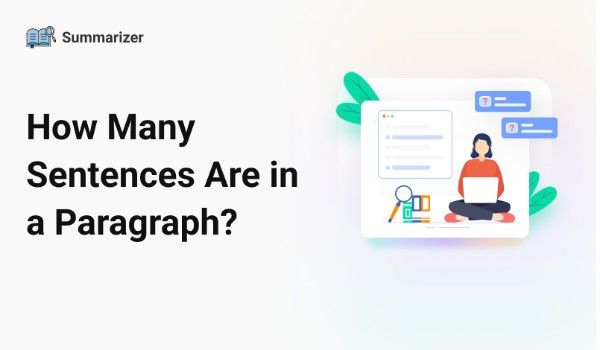
There are multiple definitions for how long a paragraph should be, or how many sentences it should contain. However, a well-established definition comes from Utah State University that says “at least 3 to 10 sentences for a paragraph in academic writing.”
Another definition that comes from Wordcounter.net states that in general writing, 3 to 8 sentences in a paragraph are enough.
But, how long should the sentences be in a paragraph? And, how can we write stellar paragraphs? Find out answers to all these questions and more with this blog post. So make sure you read till the end and don’t miss out on anything.
A paragraph is a series of sentences that contains a singular idea throughout. It usually starts with a topic sentence that introduces the reader to the main thought of the paragraph.
Then, there are 2-3 supporting sentences, followed by a concluding sentence that either closes the idea or leaves continuity for the upcoming paragraph.
Example:
“AI is here to change the way people work but with significant considerations. The smart tools are very advanced thanks to the extensive parameters on which they’re trained. But, it is important to get involved with policy-making that takes care of the ethical usage of AI. This includes dealing with DeepFakes and VoiceFakes that result in money scams, defamation of famous personalities, and more. As the line between real and AI continues to diminish, the demand to build stronger detection systems grows, too.”
This example showcases the true definition of a paragraph. It is 5 sentences long, starts with a clear topic sentence, and concludes with a statement summarizing the entire idea of the paragraph.
As far as the length is concerned, a lot of experts believe that paragraphs must be about 100 to 200 words to ensure content readability. However, this value can vary given the circumstances.
The length of paragraphs often also varies with different situations and settings. These will be reviewed in detail below.
Educators mostly like to see longer paragraphs (5 sentences or more.) This is because there is a lot of information to cover and details sometimes may not be contained in shorter paragraphs.
In an academic setting, sentences may also be longer than usual. However, according to MIT, exceeding the 30-word per sentence mark is highly discouraged.
Whitepapers are another example where longer paragraphs can be seen. These types of publications often rely upon expert case studies that have complex data and scientific backing to prove claims.
There isn’t a fixed rule here as to how many sentences should be in a paragraph. But, under a loose categorization, the situation is pretty similar to that in academics.
News reports and press releases (PR) are often written to engage the audience and draw them in to read more.
Thus, reporters usually write smaller paragraphs to contain the attention. These can be anywhere from 2 to 3 sentences, promoting readability in content.
Copywriting is usually the type of content where you’ll see the shortest paragraphs, some might even be just 1-2 lines long.
This is done because websites are made to fit content on each device type. So, smaller screen sizes don’t see lengthy text popping at them. Secondly, it is important to quickly catch the attention of visitors with concise wording that fully addresses customers' pain points.
Note: Many other cases can be covered to see how paragraph length varies with different situations. However, these are just a few examples to give you an idea to follow.
The number of sentences in a paragraph can vary based on the purpose of writing, with academic writing encouraging paragraphs of 3 to 10 sentences, while general writing suggests 3 to 8 sentences.
Crafting quality paragraphs involves developing a clear topic sentence, focusing on one core idea per paragraph, creating connections between paragraphs, and varying paragraph lengths to maintain reader interest in the content.